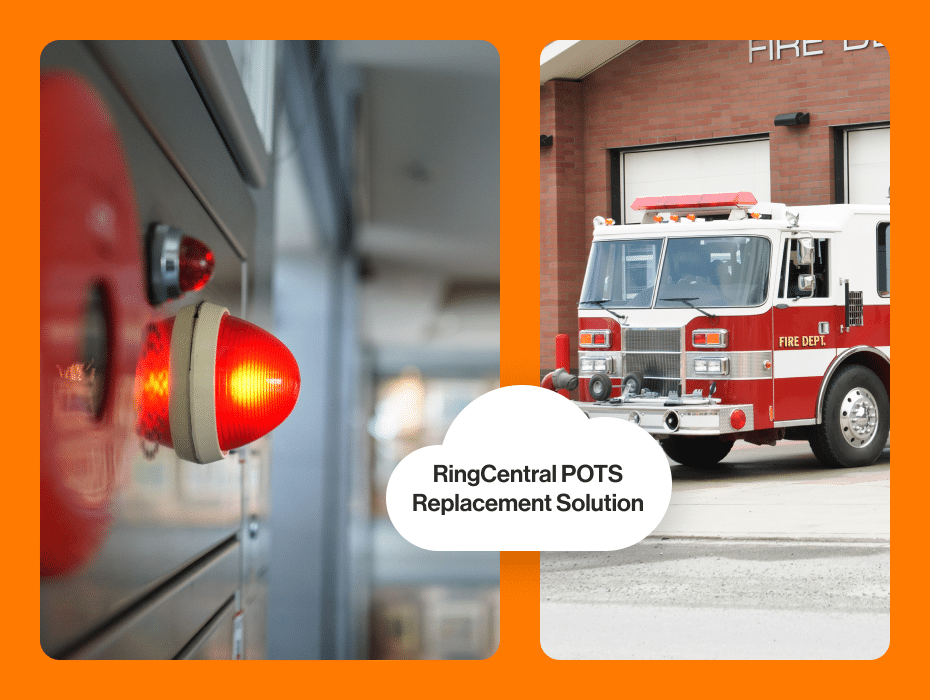The topic of POTS replacement – Plain Old Telephony Service – should be top-of-mind for businesses, especially those still using the PSTN. In the U.S., the starting point for this conversation would be FCC Order 19-72A1, issued August 2019. This marked the official start of “Copper Sunset”, where U.S carriers have regulatory blessing to decommission their legacy copper networks, better known as the PSTN.
While some mistakenly believe this calls for a mandatory shutdown, recent FCC data finds there are still some 40 million POTS lines in service. That number is substantive, but will continue to shrink, and there should be no doubt that the PSTN is going away. As such, it would be a mistake for businesses to stand pat until that number approaches zero.
The bigger issue around the FCC Order is how carriers can now manage their infrastructure as they see fit – in other words, free from the regulations that have protected landline subscribers for decades. Businesses are already seeing this in the form of soaring POTS subscription prices, and reduced service levels. Since carriers are no longer obliged to invest in these networks, the quality, security and reliability of their services will only decline. All of this points to the need for businesses to have a POTS replacement plan now.
Your POTS Replacement Plan Starts with Cloud Migration
The starting point for your POTS replacement plan depends on where you are on your cloud migration journey. For businesses still tied entirely to analog POTS, the first decision will be how to migrate from legacy telephony to digital, cloud-based telephony, better known as VoIP.
Many businesses have already made that move. For them, the next step is adopting UCaaS, where a cloud-based platform provides all modes of workforce communication, not just telephony. For both scenarios, the cloud provides a clear path to modernizing telephony, but neither fully addresses POTS replacement.
The “telephony” part of POTS is typically associated with desk phones, fax and PBXs. While these account for the majority of business telephony use cases, there is a second element of POTS, namely specialty lines. These pertain to safety and security use cases, some of which must meet regulatory requirements. Typical safety examples are alarms for fire, burglary and elevators, where voice communication is needed in emergencies. Security examples include entry systems and the monitoring of control systems and meters. Other examples are point-of-sale terminals for retailers, and ATMs for banks.
These are the more common use cases, but any facilities manager would be familiar with many others, all of which require PSTN access. Requirements for specialty POTS are limited for single-site businesses, but are more extensive for distributed or campus-based entities, such as schools, hospitals, government agencies, manufacturers and retailers. These segments will need a more complete POTS replacement plan, especially since specialty lines involve greater complexity than telephony lines.
Specialty POTS – Three Paths Forward, But Only One Practical Choice
Whether you have a handful or a few hundred specialty lines, at some point, a POTS replacement will be needed. By now, the limitations of analog, POTS technology should be clear, especially as the world around us becomes increasingly digital. In short, decision-makers have three options to consider for a set of challenges that may well be greater than initially thought.
The first option is to simply maintain the status quo. POTS will be with us for years to come, so staying the course is an option But as per the caveats noted earlier, both the risks and the costs will only increase. A second option is to replace or retrofit your specialty endpoints to support PSTN access over cloud-based connectivity. This can mitigate the impact of POTS replacement, but the high cost and disruption to operations make this option highly impractical.
This brings us to the third option – solutions that are purpose-built to support specialty POTS. These solutions utilize POTS emulation or POTS-in-a-Box as an interface for PSTN connectivity over cloud networks, bypassing the need for endpoint replacement. With this approach, businesses can complete their POTS replacement plan while maintaining safety and security for compliance, providing PSTN-grade reliability and enjoying a future-proof path to support new requirements regardless of what your POTS provider does.
RingCentral for POTS and Key Considerations for POTS Replacement
The further decision-makers think through full POTS replacement, the clearer it should become that a purpose-built specialty solution is the way forward. Regular telephony is the easy part for POTS replacement, and if only planning for that, there is no end of cloud providers to choose from. That list, however, becomes much shorter for partners who can do that along with providing a complete specialty POTS solution. RingCentral Next-Generation POTS Replacement is one such solution.
To help determine if it’s the right solution for your business, here are four criteria to consider — not just for POTS replacement, but also for the longer journey you’re on with cloud migration.
- Compliance support – many of your specialty endpoints have compliance requirements, such as NFPA 72 and UL 864 for fire alarms, as well as supporting PCI for point-of-sale in retail, and HIPAA for patient privacy in healthcare settings. Every vertical market will have its own mix of requirements, and your technology partner will need to meet them all.
- Network reliability and security – many safety and security use cases require continuous uptime, especially for emergencies where lives are at stake. This is tied to broader business continuity needs, where regular telephony services are mission-critical. Your everyday communications must be always-on and secure, and prospective POTS replacement partners need to demonstrate how they will support all this.
- Cloud migration beyond POTS – aside from being able to support all your POTS-related use cases, you should consider the ability to support all of your cloud migration use cases. Beyond POTS, VoIP and telephony, UCaaS platforms need to integrate with other applications across your organization. This is the bigger picture story around cloud migration, as new applications will keep coming, especially those tied to AI and mobility. In this regard, vendor offerings should be viewed in terms of future-proofing your business, not just for POTS replacement, but your operations overall.
- One partner for everything – meeting your technology requirements is one thing, but on a practical level, there are many advantages for partnering with one provider, especially for your broader cloud migration plans. One partner ensures tighter integration across the portfolio, not just for current needs, but as upgrades and new applications come along, as well as scaling to support your organic growth. There is also the simplification that comes around vendor management, time-to-deployment, technical support, one bill for everything, and one partner across your full cloud migration journey.
Conclusion
The first step for properly addressing POTS replacement is to understand the full set of implications and how this will impact your business. Aside from covering these issues, this analysis has also outlined why a purpose-built POTS replacement is the best path forward, along with the core capabilities you should look for in a technology partner. Whether you are looking at a VoIP phone service for the first time, or are further along with cloud adoption, choosing the right partner will be critical. Regardless of your needs, RingCentral is well-positioned to address them.
Read more about RingCentral Next-Generation POTS Replacement.
Updated Mar 13, 2025












